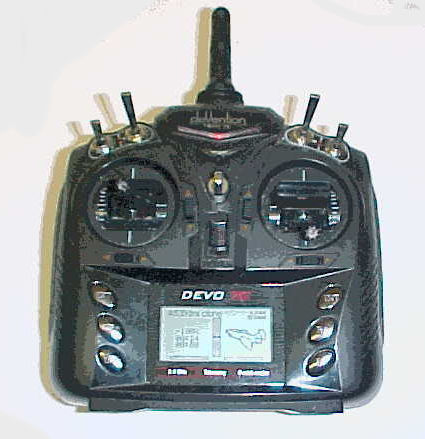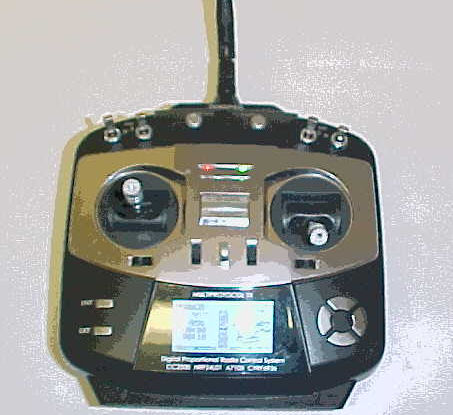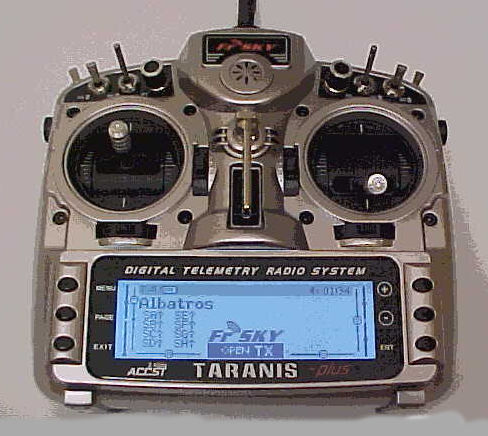

That sounds simple enough except that there are dozens of different ways in which that can be done. Once bound, there are several different ways that the information can be transmitted. Each of these is called a 'protocol'. Where things become even more complex is that there are basically four different transceiver 'chips' that can be used (there is no point in naming them here).
So, a multi protocol transmitter will have up to four different RF modules and supporting software that will accommodate most of the systems in use from 'toy' quadcopters up to aerobatic aircraft or helicopters. To put it another way, you can fly everything on the market with one transmitter. Is there a price to pay? Yes, you have to learn to program the thing!
Although a multi protocol tramsnitter will bind to most available products, you still have to work out the minor controls. These include such functions as turning a camera on or off or flipping, etc. In most cases, these are operated by pushbuttons and the current range of Multi protocol transmitters do not have pushbuttons.

Devo 7e with extra switches
The next stage was to add the other transceiver chips so that it could work the remaining systems. Originally, adding extra modules meant adding extra aerials, but the advent of 3 and 4 in 1 modules eliminated this.
The range included transmitters from 6 to 12 channels, most of which were of conventional size. However the Devo 7e was smaller, lighter and conveniently shaped. This originally had two 2 position switches in addition to the sticks, but the deviation software allowed extra switches to be fitted.

Jumper T8SG
A company called Jumper then introduced their 'T8SG' model. This was effectively a fully modified Devo 7e with four 3 position switches and two extra proportional knobs. This had a fairly short life and was replaced by a V2 version and a V2 Plus. The Plus version has Hall effect sticks (see below) and a different display. These all run Deviation software. The V2 and V2 Plus have four 3 position switches, two 2 position switches and the proportional knobs relocated to the side.

Jumper T8SG Plus
The Deviation software allows you do just about anything you want - if you can work out how to do it. Although all of the above come with 30 model memories you can easily increase that. The theoretical maximum is 200 for the Walkera and 255 for the Jumper models.

FrSky Taranis X9D
For some time now the standard transmitter for drone racing has been the FrSky 'Taranis X9D' although it is almost unknown in the UK. This was unique (at the time) in that it had an internal module which could be used for a small range of protocols, plus a bay at the rear which could accommodate modules for other protocols. You can now obtain a module made by iRangeX which will fit this bay and will allow you to use most of the remaining protocols, all programmed from the main display. The 'Taranis' also has a voice synthesiser which can give verbal warnings. Yhe Taranis is festooned with switches and knobs and has six 3 position switches, two 2 position switches (one spring-loaded) and four proportional knobs/levers.
Not to be outdone, the Jumper T8SG V2 and Plus now have a similar bay at the rear. This must be with some future development in mind, since the standard version covers most of the available systems. It may be for a future voice module.
The 'Taranis' runs 'Open TX' software which involves a much steeper learning curve that 'Deviation'. The one thing that all of these transmitters have in common is that they are programmed via 6 buttons: 'Enter', 'Exit', 'Left', 'Right', 'Up' and 'Down'. You will have guessed by now that they all have a different layout. The layout of the Jumper models is much more intuitive. The 'Taranis' is just about the most unfriendly system imaginable. Not only are there a host of menus within menus, but long or short presses of the buutons do different things.
Other transmitters are currently being developed and things are flexible at the moment. One other transmitter has appeared and then been withdrawn due to problems with the stick potentiometers. By the time tou read this, an updated version will probably be available.
To put things in perspective, a Walkera 'Devo 7e' (other models are available) will currently cost you around £50 but you have a fair amount of work to do. The original Jumper T8SG' is no longer available. The V2 costs around £91 and the V2 Plus araound £107. A FrSky 'Taranis X9D' will set you back £170 (but you do get a receiver with it) and the iRangeX 'IRX4 Plus' module £30.
All of the above can be found at http://www.banggood.com/ and other outlets.
Deviation software can be found at: http://www.deviationtx.com/
Open TX software can be found at: http://www.open-tx.org/
Videos on how to modify and update the software on all of these versions can be found on Youtube at: http://www.youtube.com/
A full list of the protocols in use, the models covered and the RF chip involved can be found on the Deviationtx website.